The Tokina Firin 20mm F2 is Tokina’s first lens for the E-mount and currently the fastest wide angle in the ~20mm range for the system. Read my in-depth review to decide if it could be a good addition to your camera bag.
Image Samples You can find all images shown in this review in full resolution in this Tokina Firin 2/20 flickr album.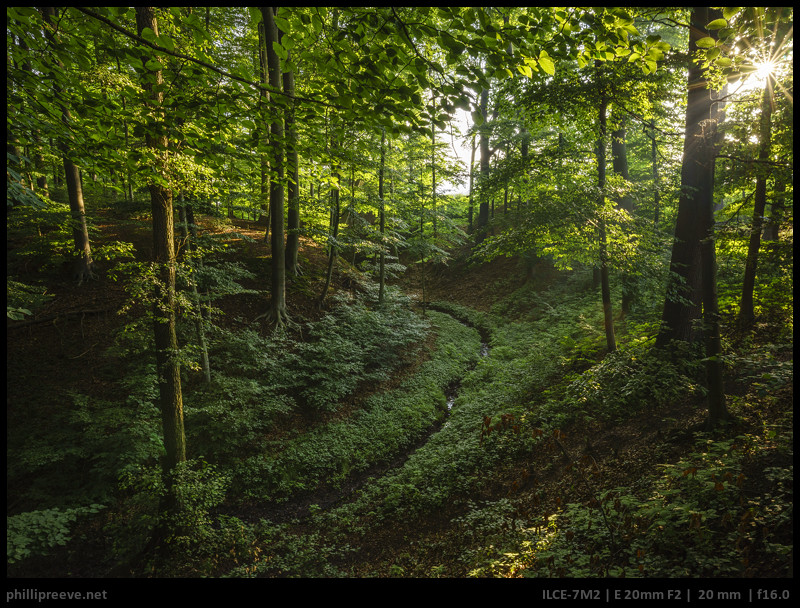
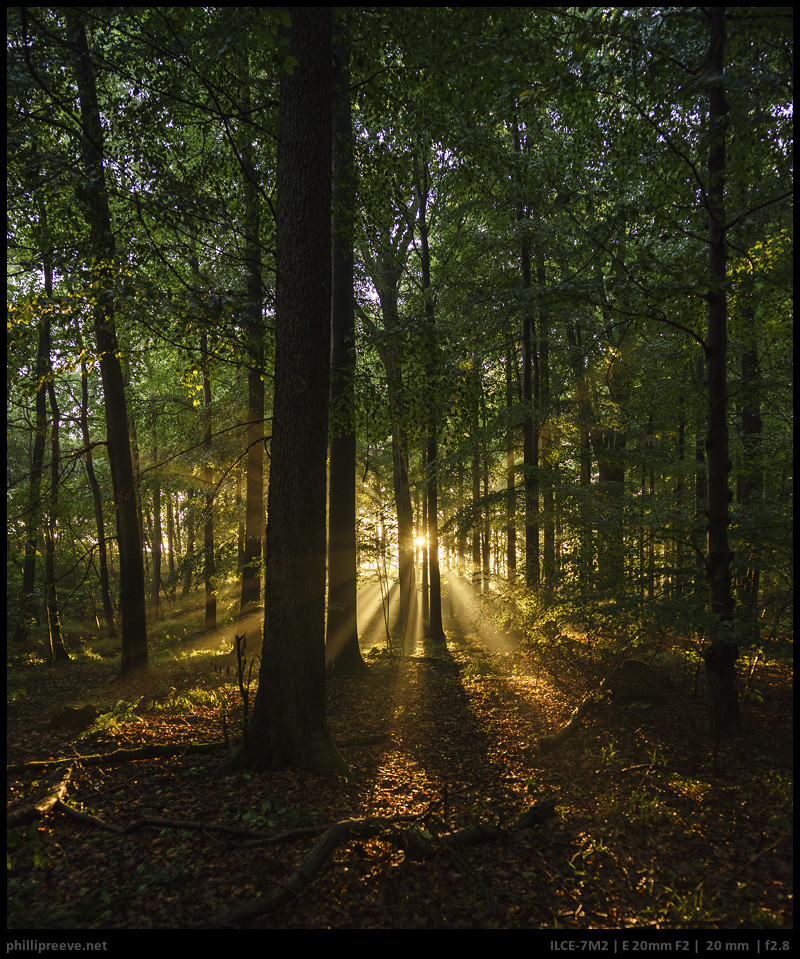
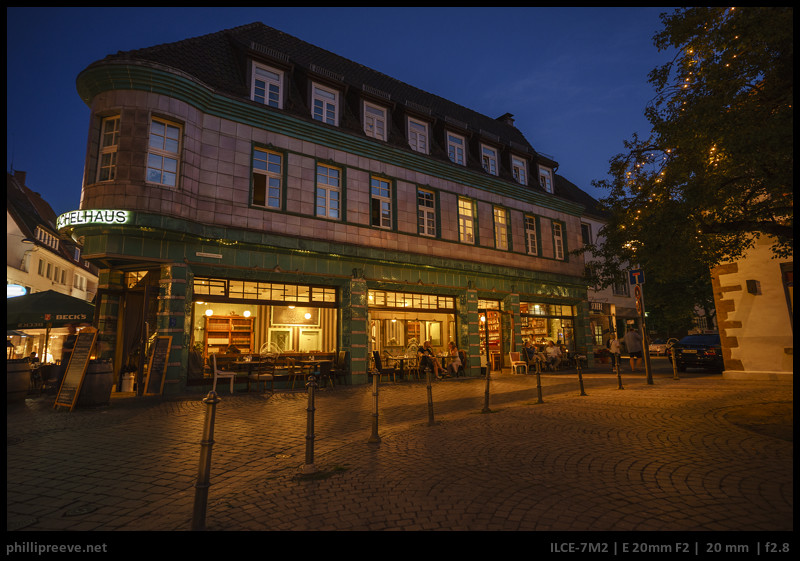
Specifications
| Diameter | 69 mm |
| Length | 81.5 mm |
| Filter Thread | 62 mm |
| Weight | 490 g |
| Max. Magnification | 0.09 |
| Close Focusing Distance | 29.5 cm (measured) |
| Number of aperture blades | 9 |
| Elements/ Groups | 13/11 |
Build quality and handling
The Tokina Firin 20mm F2 offers good but not perfect build quality. It seems to be mostly made from metal and feels solid enough but not quite as well made as the very best lenses. Markings are not engraved, only printed. Since I only own this one copy and I don’t plan to open it I can’t tell you how reliable it will be, only how solid it “feels”.
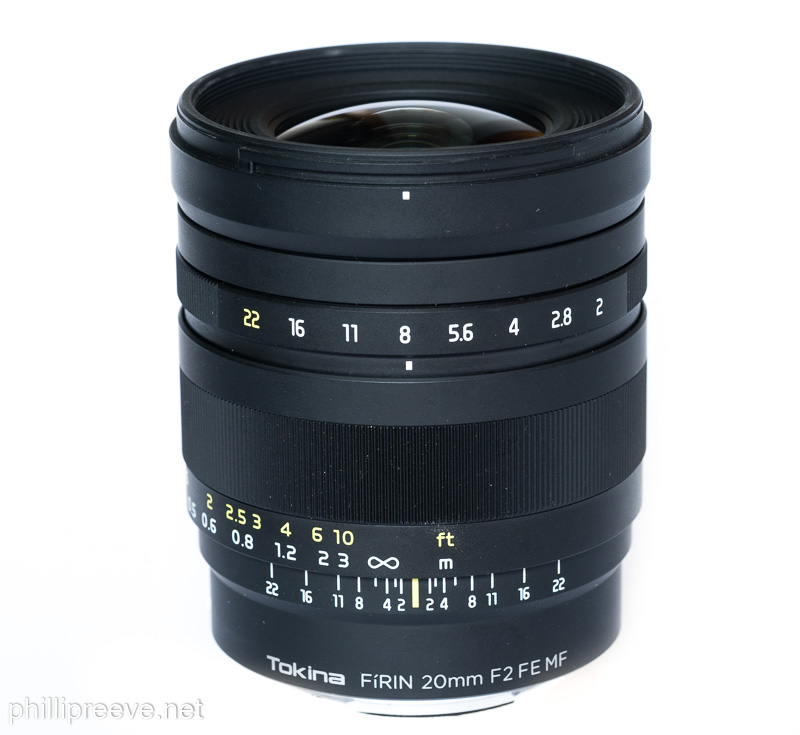
Focus Ring
The focus ring travels around 100 degrees from 0.28 m to 1 m and a further 30 degrees to infinity which gives good travel at all focusing distances. The hard stop is behind infinity on the focus scale and true infinity is a little before the infinity sign. The focus ring offers good grip and a pleasant diameter. The resistance is fine but I would have preferred a little more stiffness.
With the Tokina Firin and all other manual native lenses with electronic contacts you can let the lens automatically activate the focus enlargement when the focus-ring is turned. I found the function annoying and deactivated it (Gear/1/MF Assist – Off) but other people might find it useful.
The Firin focuses internally.
Aperture ring
The aperture ring does not offer a very good tactile experience because it isn’t raised far, and I sometimes struggle to find it by intuition.
The click stops are distinctive enough but I have used aperture rings with more distinctive stops. From f/2 to f/22 the Tokina stops down in 1/3 stops. I would have preferred 1/2 stops because it is hard to keep track of the aperture just by touch.
The aperture ring features a de-click feature for clickless operation when shooting videos. You simply move a little switch at the front of the lens, no tools needed.
The Firin communicates the used aperture to the camera so you get all the exif information but you can’t change the aperture with the camera, you have to change it by the aperture ring.
Hood
Well… The hood is a large square made from solid plastic and it is really large which makes it impractical to put in any reasonably sized camera bag so I usually leave it at home. If you can fit it into you bag though it offers decent protection against damage and sun.
Handling
The Tokina is a medium sized lens which is rather dense at 490g. Handling on my a7ii isn’t bad but it isn’t optimal either because the Firin has a rather large diameter and because it weighs almost as much as my a7ii.
The Firin has electronic contacts to communicate with the camera so you don’t have to manually set the right focal length for the stabilizer and you have all the exif information. You also get the electronic scale which I found useful at times.
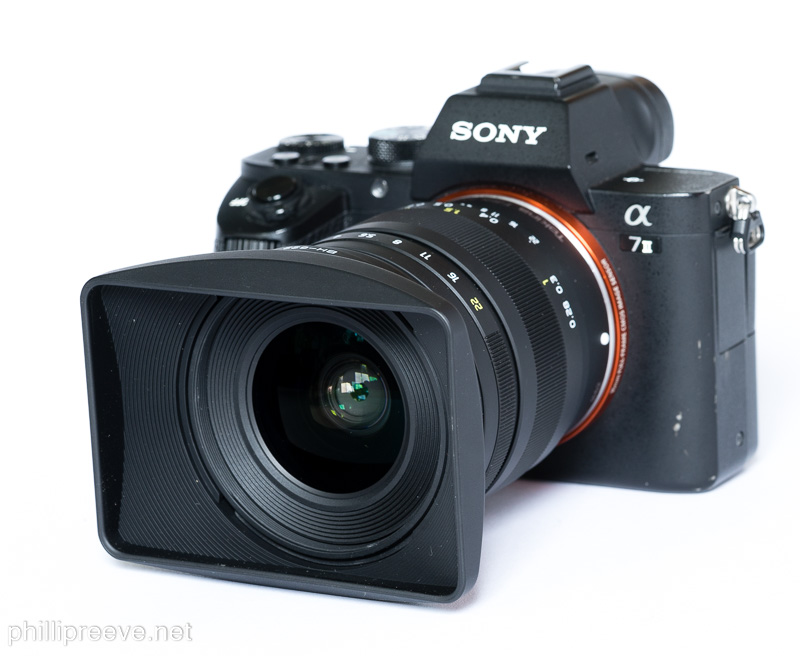
Optical performance
These results are based on the use with a Sony Alpha 7II.
Flare Resistance
The Tokina’s flare resistance is a mixed bag. For most scenes there is very little veiling flare and no ghosting. This is a better performance than I had feared because Tokina has a really bad track record when it comes to flare resistance.
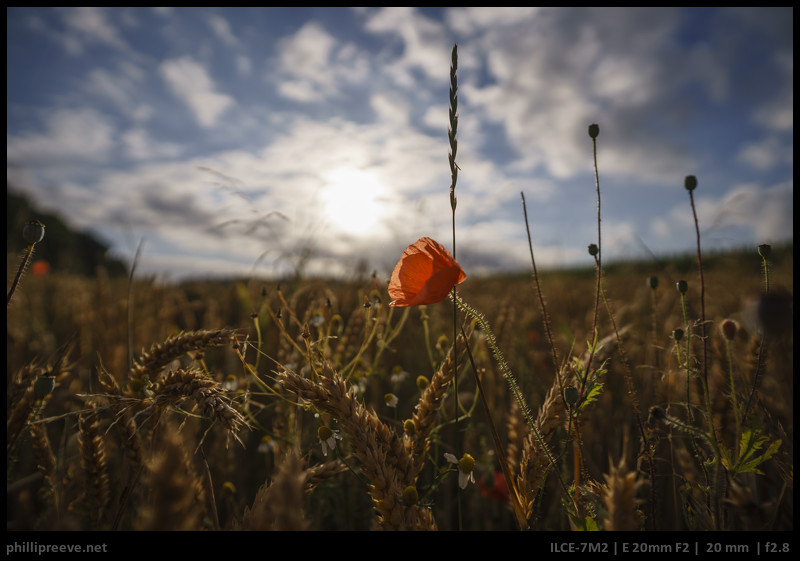
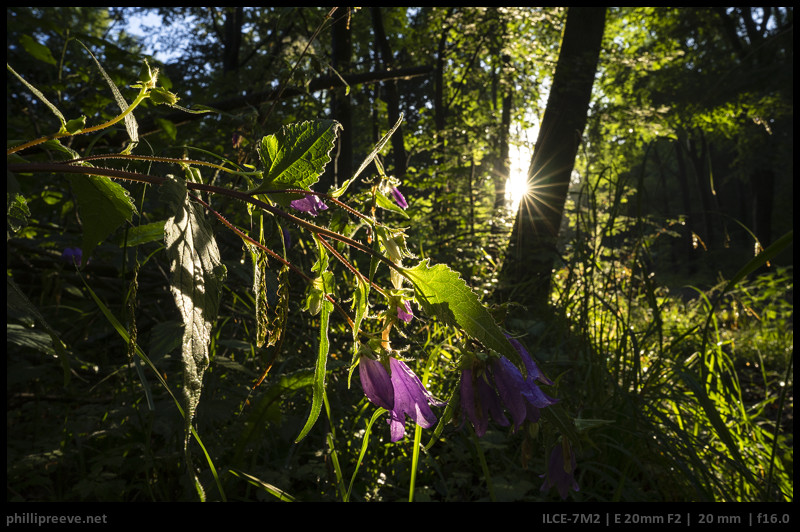
But once you have more demanding backlit scenes you quickly run into issues. You can get an annoying amount of ghosting and some veiling flare as well. This is a serious issue for me because with a 20mm I often include the sun in my compositions.
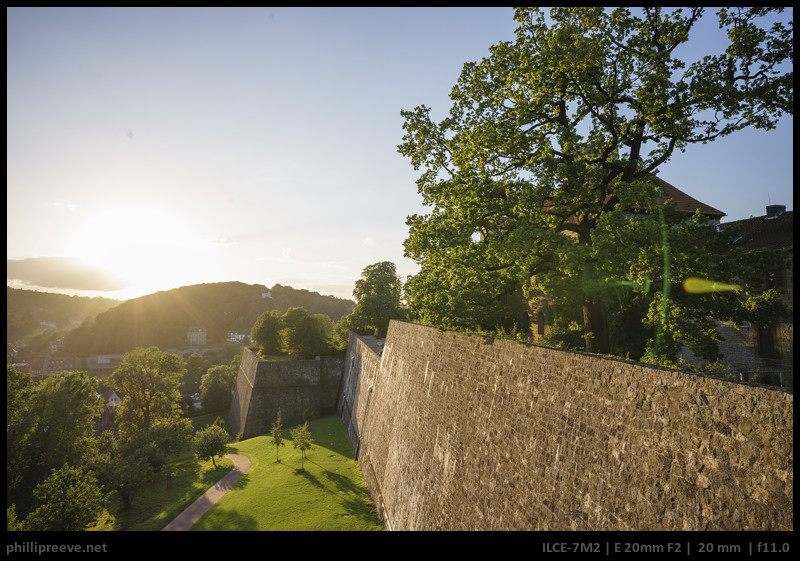
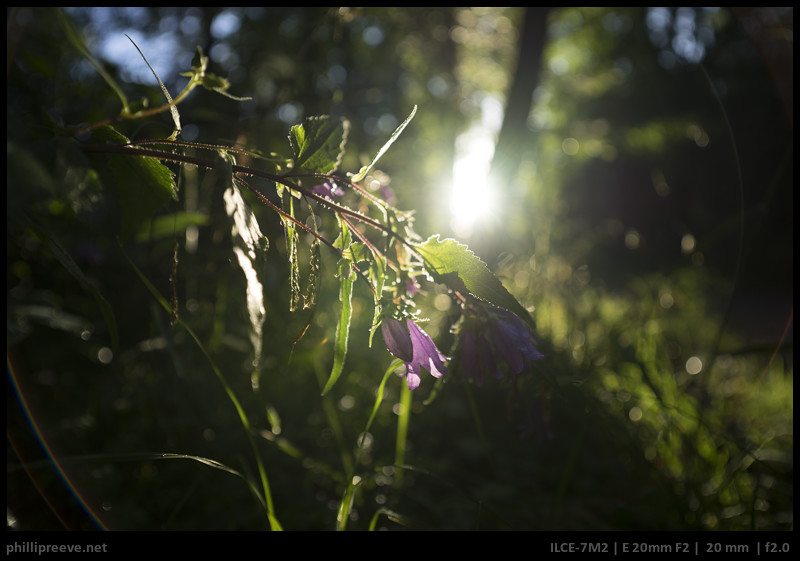
I also noted, that ghosting is much stronger when the Tokina Firin 20mm F2 is stopped down:
Sunstars and sensor reflections
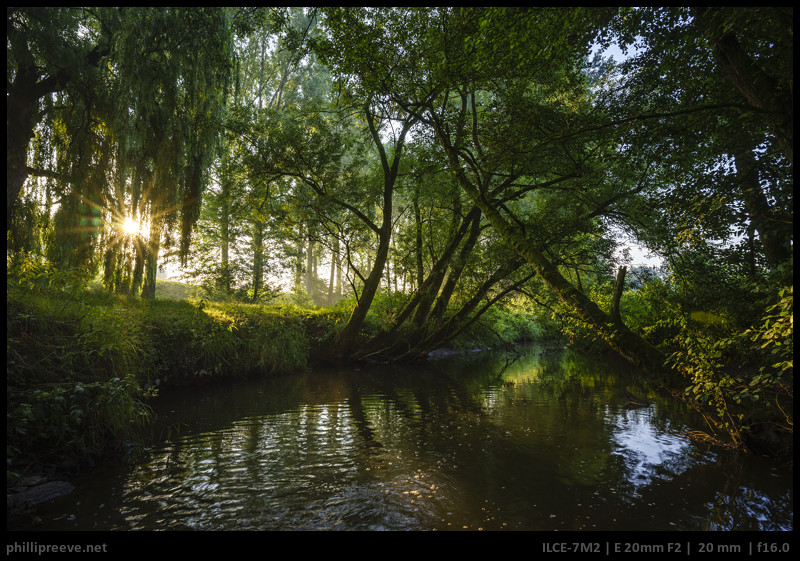
Since the Firin has 9 rounded aperture-blades it produces 18-pointed sunstars. You need to stop down to f/16 (well into diffraction territory) to makes them well defined, and even then the rays won’t be long. This is a matter of taste but I would call it an average performance. Lenses like the Loxia 2.8/21 or Voigtländer 1.7/35 produce much more prominent and better defined sunstars: and at faster apertures too!.
Another issue I noticed is that I got an unusually high amount of sensor reflection that I have never noticed before with the a7II (in stark contrast to the a7). Bastian did a check on his a7rII and he could not reproduce the issue, but he could only check with street lamps, not with the sun. They appear only significantly stopped down but as I just mentioned to get nice sunstars you need to stop the Firin down a lot.
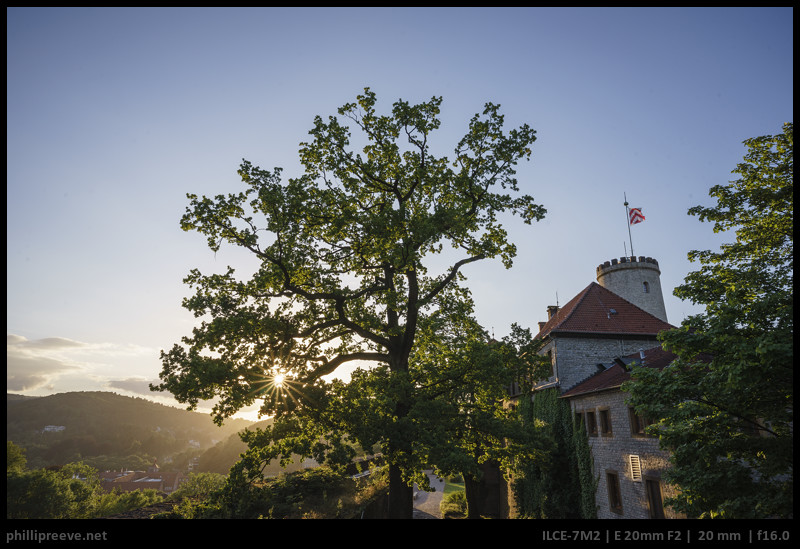
Bokeh
The Firin’s bokeh is quite good: Out of focus highlights have a mostly even illumination with only minor outline off-center. For such a wide lens this s a good performance.
The short focusing distance of 29.5 cm is far from spectacular but enough to create some nicely blurred backgrounds.
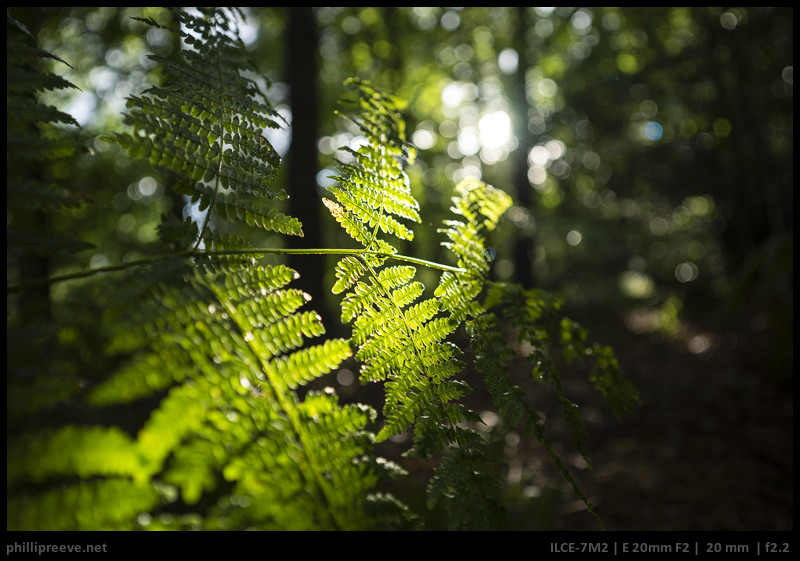
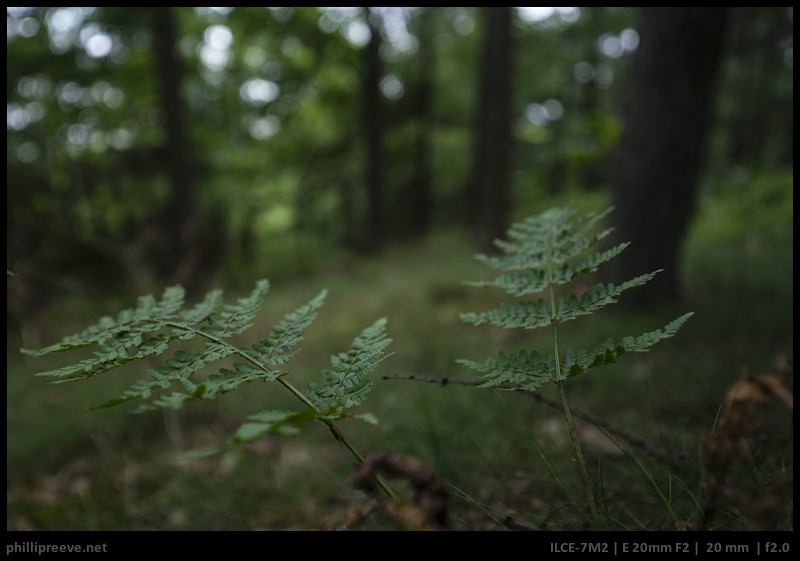
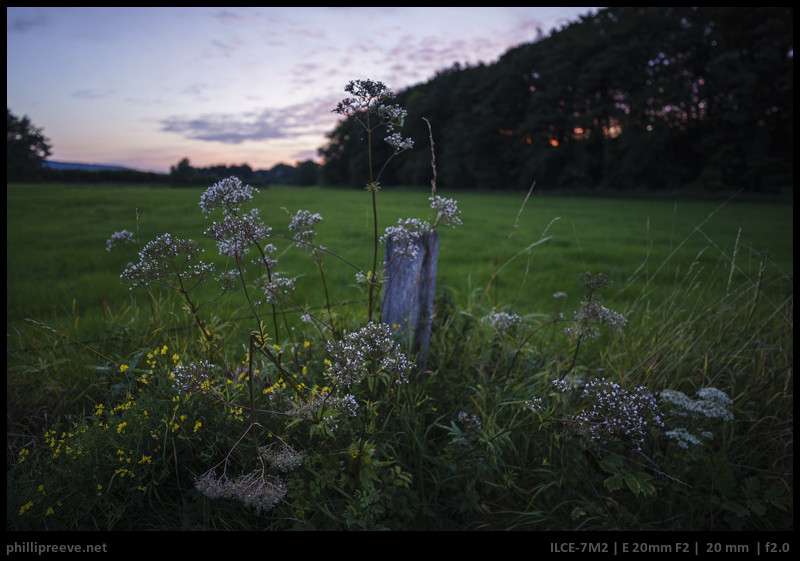
Thanks to 9 rounded aperture blades bokeh circles stay round even if you stop down:
Chromatic Aberrations
Axial CA is very well corrected and you need really strong contrast to see any CA.
Lateral CA is corrected really well. I was actually surprised how well since Tokina lenses historically have had a lot of lateral CA.
Vignetting
With activated electronic compensation Vignetting is 1.7 stops at f/2 which is reduced to 1.2 stops at f/2.8 and there is very little improvement after that. I think this is a reasonable level and will hardly ever be a problem.
Without compensation I measure a whopping 2.6 stops at f/2, 2.1 stops at f/2.8 and very little improvement after that, at f/5.6 it is still around 2 stops. These figures are quite high but hardly surprising for such a compact and fast lens, the Loxia 2.8/21 for example is half a stop worse.
before: with electronic correction after: without correctionDistortion
The Firin shows a moderate degree of mustache distortion. A setting of -5 in LR corrects it to some degree but not perfectly which can be an issue for architecture photography because at time of this review the is no LR-profile available to achieve a better correction.
before: no correction | after: -5 correction in LR.Closeup Performance
At its close focusing distance the Firin is noticeably softer at f/2 but from f/2.8 performance is excellent (at least in the center where I checked)
Astro-Performance
I would really have liked to go more into detail on this aspect but I managed to format my card with the one test I shot and afterwards weather didn’t allow me to repeat the test. What I saw looked good but not perfect, larger starts showed the butterfly pattern to a smaller degree.
Sharpness
One big caveat: My copy wasn’t well centered. One corner was not focused in the same plane as the other corners. Since those other corners looked good I decided to go on with the review none the less. As I (and Bastian) had a closer look it became obvious that the midframe area also varied between the four quadrants, it wasn’t just that one corner. So I don’t know if I can extrapolate from my experience with the quadrants to the general performance which should be expected of this lens. We have learned our lesson and won’t do another review with a lens we know is not well centered but since there is very little independent information about the Firin’s performance available I decided to publish my findings anyway.
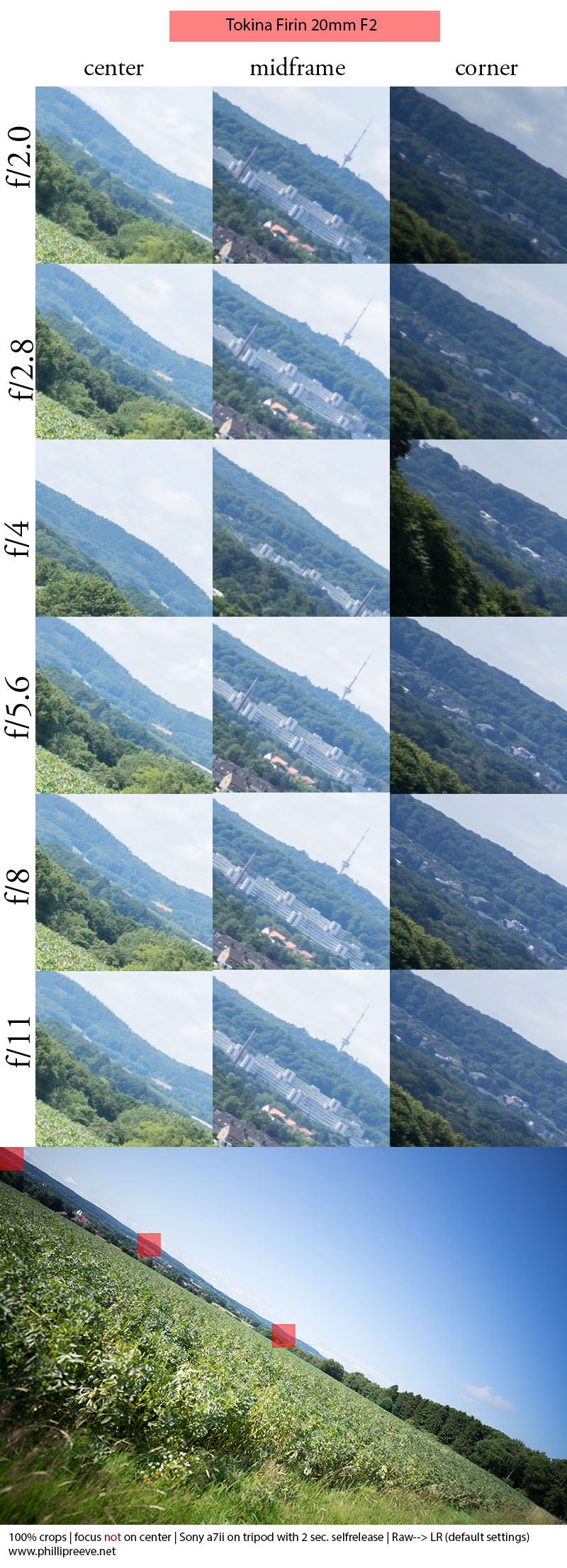
Usually I focus my sharpness tests on the center but after analyzing my sharpness series I noted, that when I focused on the center the corners were quite a bit less sharp, because of field curvature (corners focused behind center). So I sacrificed a little bit of sharpness in the center for a significant gain in the corners.
f/2: Excellent in the center, good in the midframe area and corners
f/2.8: A little improvement in the corners, interestingly the midframe area is weaker than the corners
f/4: Again a little improvement in the corners
f/5.6: Now it starts to shine with very good across the frame sharpness.
f/8: The center is a tad softer, the corners are a tad better.
f/11: A little softer due to diffraction.
All in all a very good performance, only midframe area could be a bit better. From f/2 you really need to zoom in to 100% to see any deficits so I never hesitate to use the lens wide open when I need the speed. If you want to pixel peep you will be happy from f/5.6.
Alternatives
Zeiss Loxia 2.8/21: The Loxia for me sets the gold-standard for landscape photography. It is small, very well made with excellent optical performance in any aspect but vignetting. The Tokina is a good lens in all these aspects (well maybe not regarding flare resistance) but not as good a lens. But it is a stop faster and costs about half as much, so unless you are after THE very best lens or shoot many backlit scenes, the Tokina is a reasonable alternative. If your focus is on astro-photography the Firin is the better alternative.
review | 394 g | $1499
Sony FE 4/16-35 ZA: I didn’t get the chance to compare my copy of the 16-35 directly so I can’t be super precise here. I think the Firin is sharper in the corners, the FE better in the midframe area but not by a large margin, getting a good copy is probably more important. Both lenses suffer from less than ideal flare resistance and while the Firin is obviously faster the zoom can zoom so it depends on your priorities which is the better lens.
review | 518 g | about $1348
Zeiss Batis 2.8/18: For me the manual focus of the Firin is a feature, for other people it is an issue and the auto focus Batis the closest alternative. The Batis is as sharp or sharper with better flare flare resistance and sunstars. It also quite a bit lighter, even though it has a higher volume. I wouldn’t discount the difference in focal length, for a super wide angle 2 mm are significant. Apart from these aspects the Tokina is significantly cheaper.
review | 330g | about $1500
Canon nFD 2.8/20: If you are on a tight budget the Canon is a decent wideangle solution. You need to stop it down to f/5.6 for good and to f/11 for very good across the frame sharpness and you have to consider the weak flare resistance but I was quite happy with the results in the end. If you can afford it the Firin is a much more versatile lens though.
review | 305 g | about $200 used | at ebay.com (affiliate link)
Conclusion
pros
|
average
|
cons
|
I enjoyed using the Tokina Firin 20mm F2. One reason is the good handling (after I got rid of the stupid lens hood), since it is well made and reasonably sized the Firin never stood in my way and allowed me to focus on taking pictures. Another reason is that it is sharp across the frame from f/2 with good bokeh so I never had to worry about stopping down or placing my subject in the center of the image.
I enjoyed the Tokina’s fast speed because I could shoot even in rather dark environments without having to use a tripod. I am not much of an astro-shooter but since the Tokina has relatively low coma and not too high vignetting it should perform well for this application.
As always there are some caveats. I think the most significant one is the less than spectacular flare resistance. Especially for my landscape images I like to include the sun in the composition and this does not work well with the Tokina. Sunstars are another issue since you need to stop down to f/16 for reasonably well defined ones. As always it depends on what you want to do with the lens but for me these issues are important enough that I chose to save a little longer to afford the Loxia 2.8/21 which excels here.
All in all the Tokina is a good lens and I think for many it’s many strengths will significantly outweigh it’s weaknesses, especially if you consider the rather low price. Personally though I will save a litte more to afford the Loxia mostly because of the Firin’s weak flare resistance.
The Tokina Firin 2/20 sells for $799 at Amazon.com or at ebay.com. In Europe it sells for 772€ at Amazon.de (affiliate links).
If this review was helpful to you, please consider using one of my affiliate links. Thanks ?
More Image Samples
You can find all images in full resolution in this flickr set: Tokina Firin 2/20 flickr album.
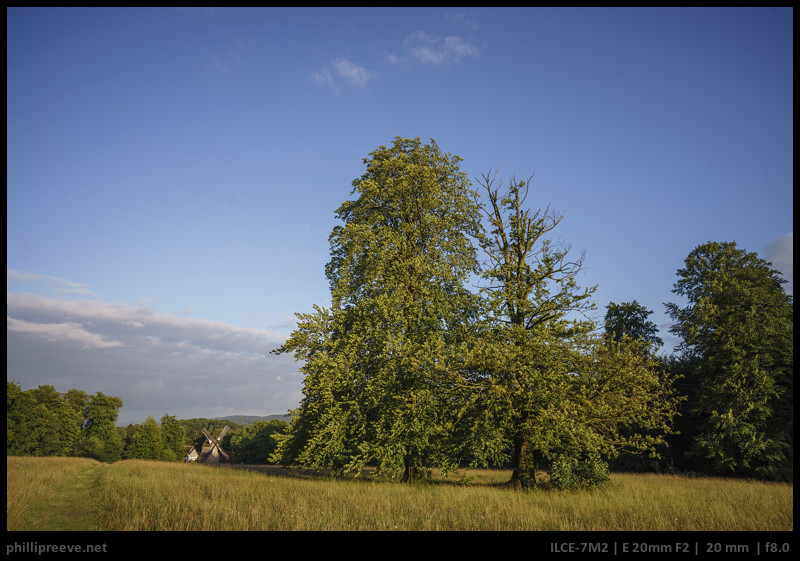
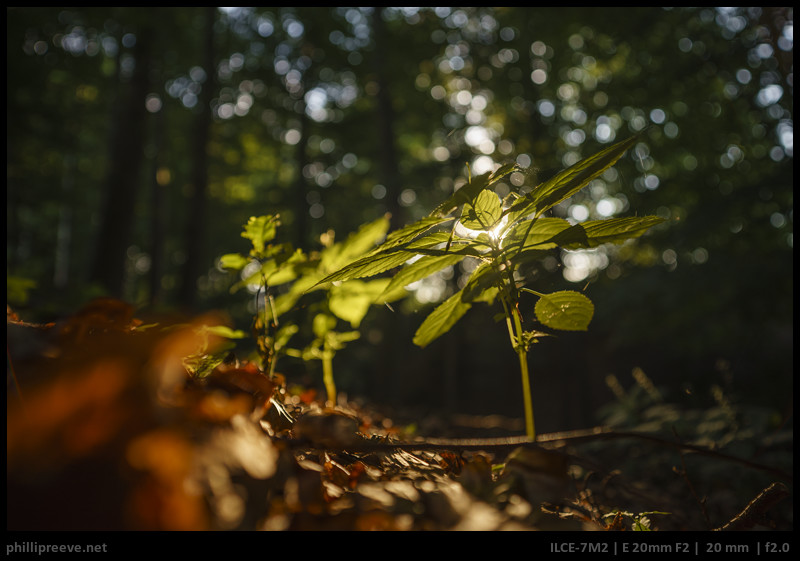
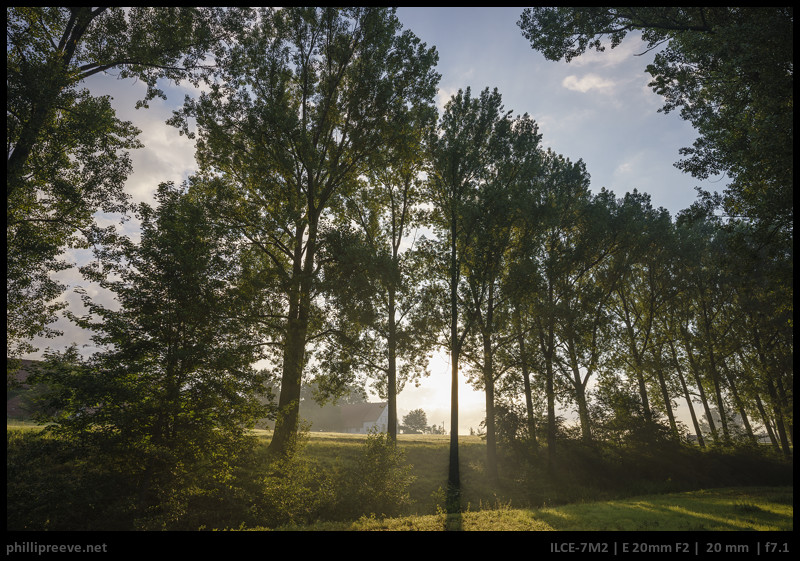
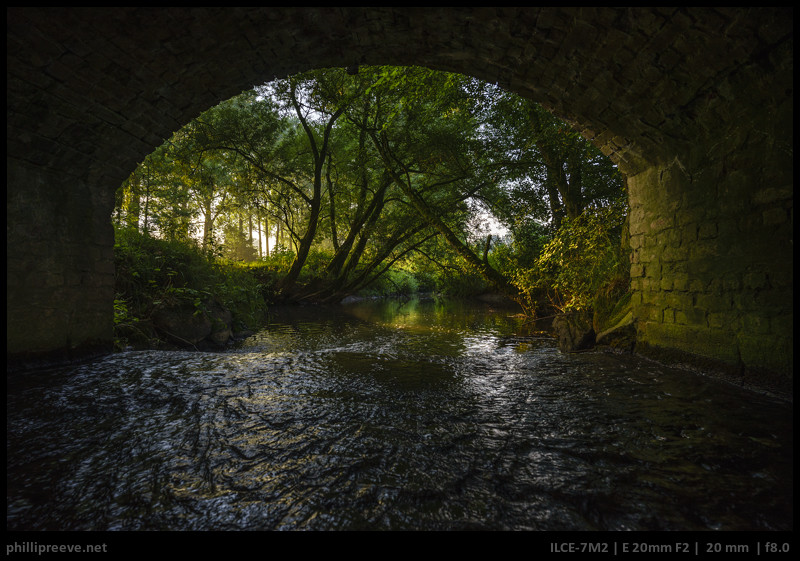
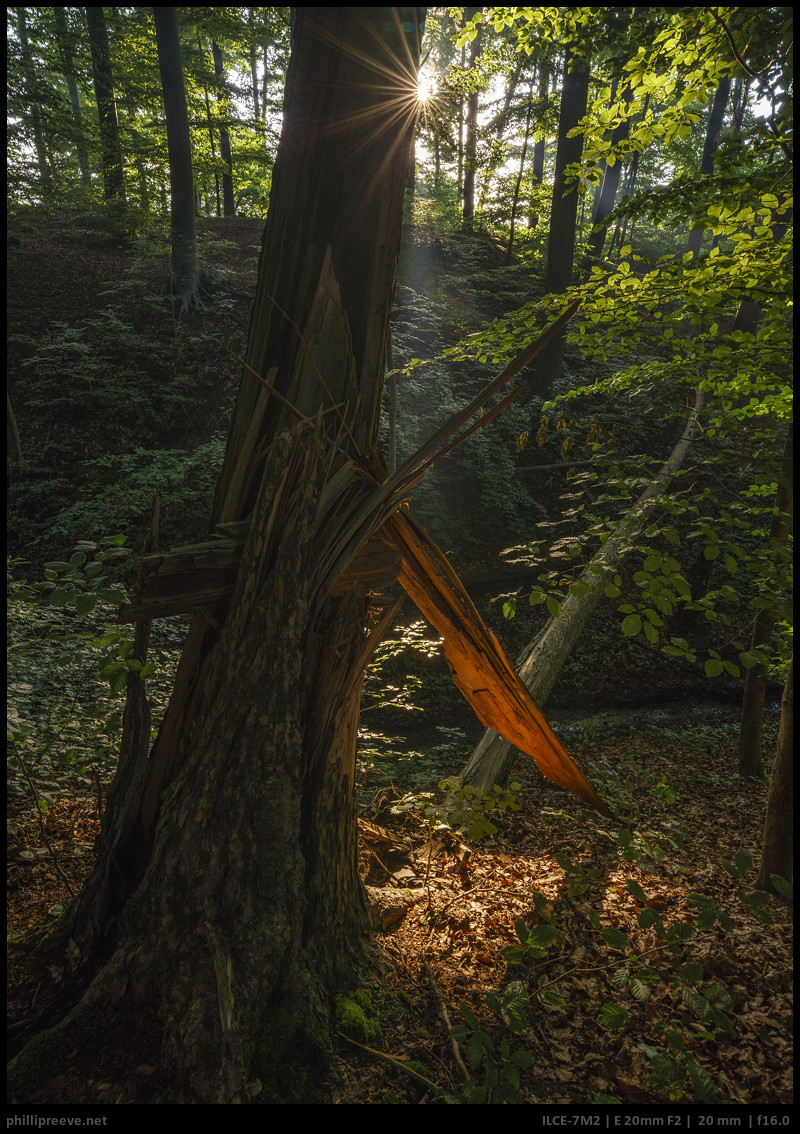
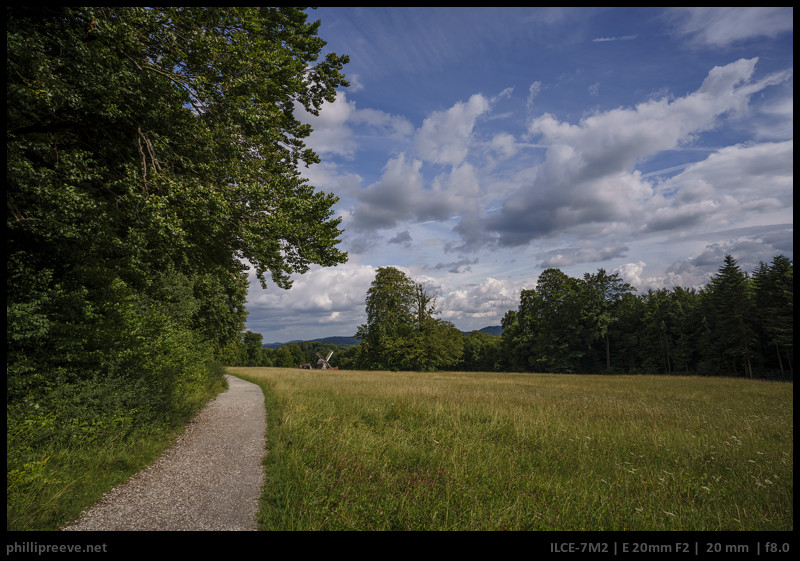
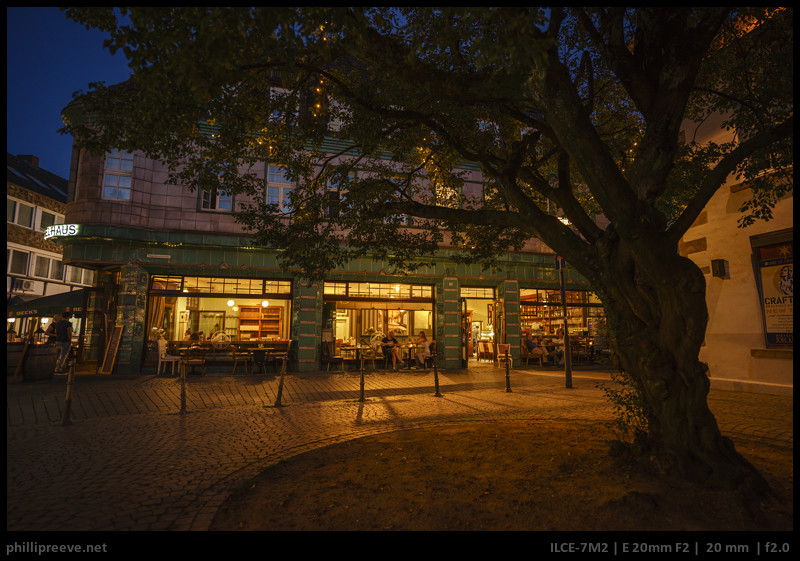
Other articles
- User guide to Ultra Wideangle lenses for the Sony Alpha 7
- Review: Zeiss Loxia 2.8/21 Distagon T*
- Long-Term Review: Sony FE 16-35mm f4 ZA OSS T*
This site contains affiliate links. If you make a purchase using any of the links marked as affiliate links, I may receive a small commission at no additional cost to you. This helps support the creation of future content.
Latest posts by Phillip Reeve (see all)
- Review: Samyang AF 75/1.8 FE - April 12, 2021
- The FE-List now has 113 lenses on it - March 25, 2021
- 2020 – Year’s end review - December 28, 2020
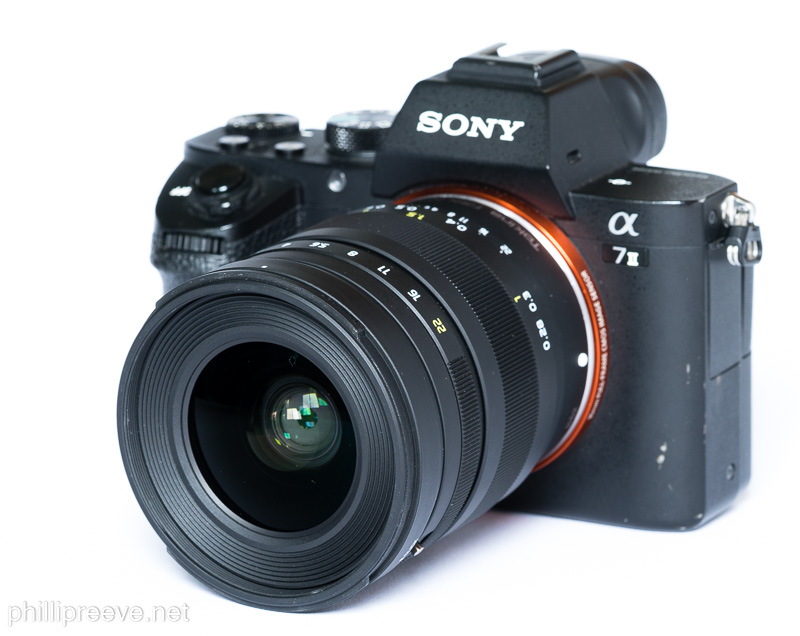




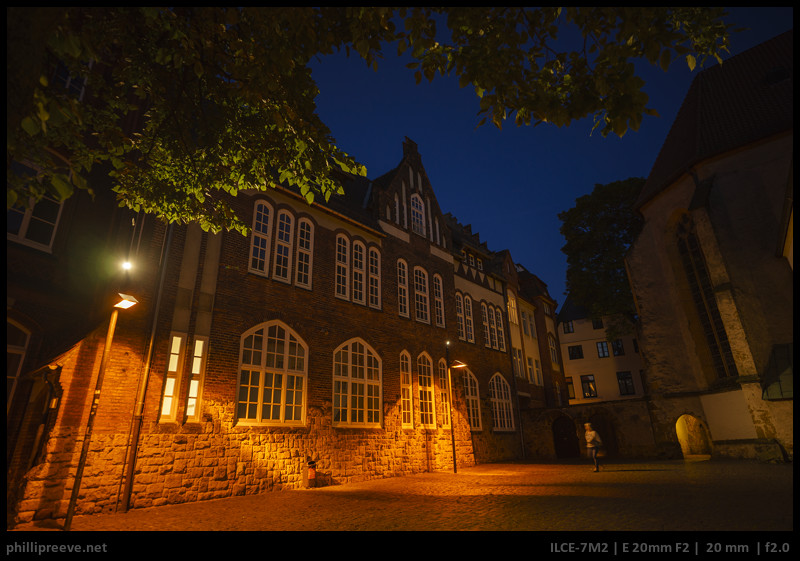

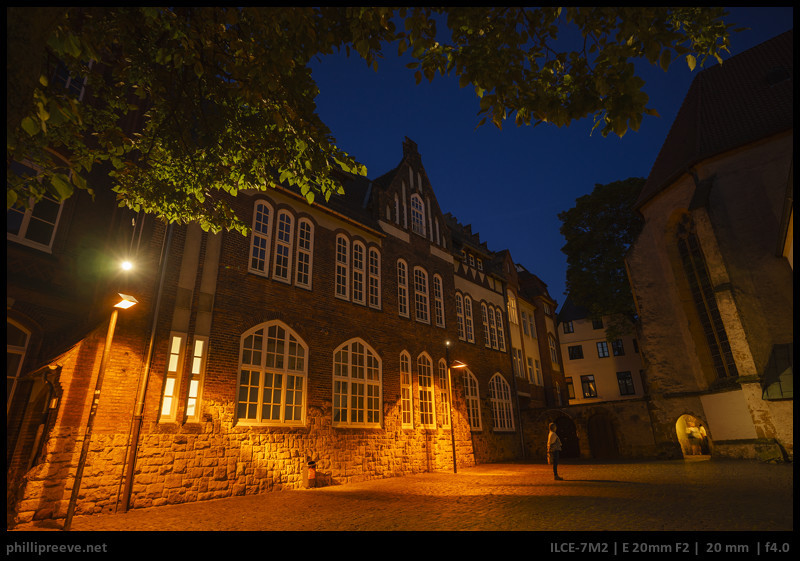



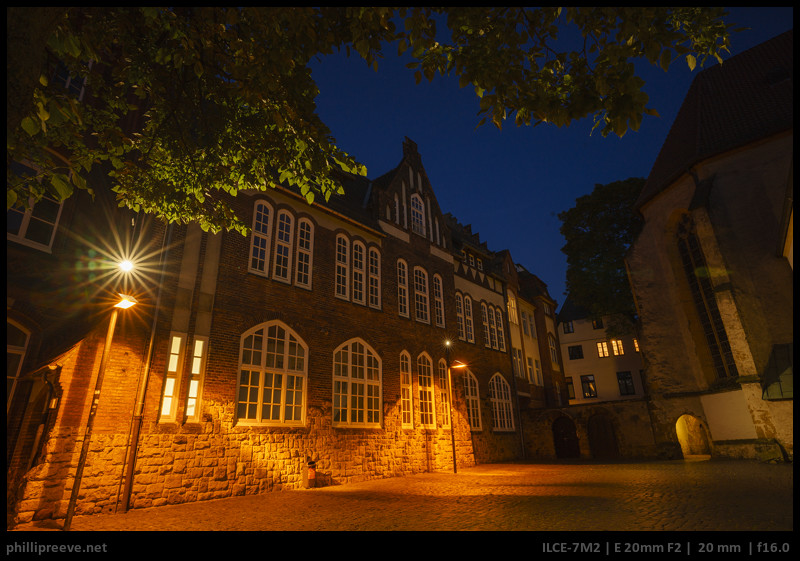
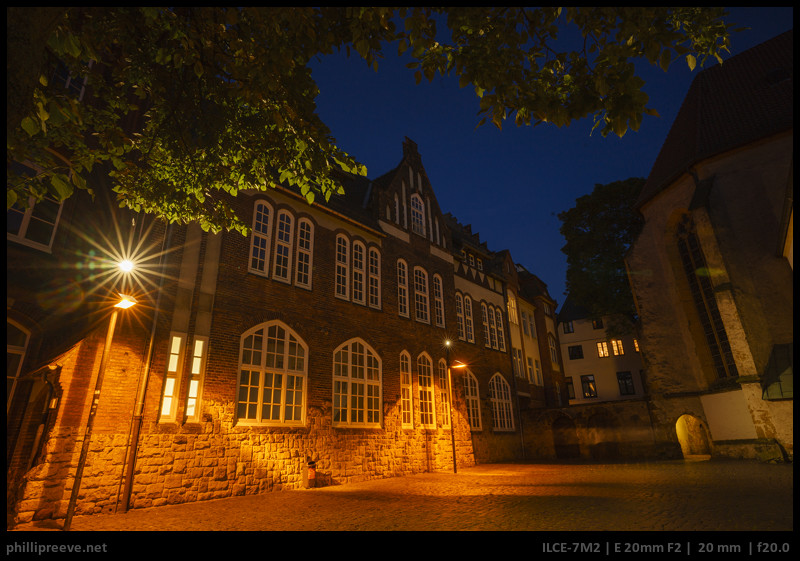






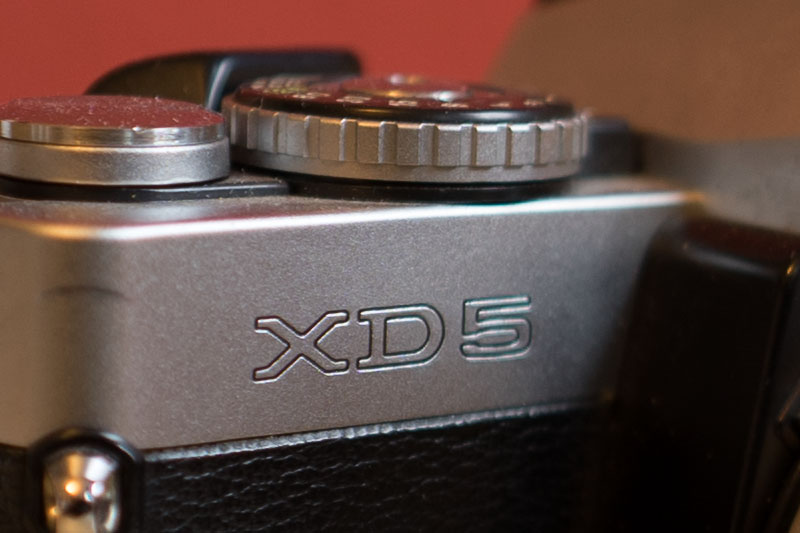




Looks like a nice lens but for me I’d rather save up a little longer and get the Loxia. Thanks for the review, Phillip.
so we came to the same conclusion 😉
Whoops, I must have missed your last sentence. Looks like we did. The Loxia is too nice of a lens to pass up, the flare resistance is perfect and having sunstars from 2.8 on is a huge plus. Well worth the money , IMO.
Thanks, Phillip, for honest review. Mustache distortion and poor flare resistance makes me worry a bit, I had bigger expectations :/.
Could you, please, add some words about micro-contrast and color reproduction? How good is Firin in such aspects?
Both are softer categories without a clear definition. I was happy with what I understand by micro-contrast and colors.
Good review. especially the images are nice like allways. For me a great alternative its the samyang 20mm 1.8.
I purchased one on February primarily for to use for astrophotography. It took three tries to get one that was sharp across the whole frame at f2.8. This is, I believe, to be expected with any commercially available mass produced lens. Even with tight tolerances, lens to lens variations can be detected. This is well documented by Roger Cicala over at LensRentals.com/blog. For his MTF optical bench tests he uses a minimum of 10 samples.
-louie
So how do you like it for astro photography? Do you have any full redolution samples online by chance? 🙂
So far I never had to try that many copies but it is certainly possible.
Hi Phillip,
I am very happy with this lens for astro and landscape. I will have some finished shots posted soon but here is a link to some fullsized test shots from two different lenses. The lens marked SN244 is the one that I ended up keeping.
https://www.dropbox.com/sh/1yqhnl4c2z4zgkq/AAD0WuGb1sC_fTtSq8tYl6R4a?dl=0
-louie
Hi, nice write up, as usual. I have a better opinion of the Tokina 20 than you; I find it is a great lens, for the money. And I used the Loxia 21 before. If I may offer a different view:
1. Lens hood: I don’t understand why the negative comment. I have it mounted on the lens all the time. I carry the lens on the A7, plus another A7II with the Zeiss 55, all in a Lowepro Flipside Trekker backpack. And it is effective.
2. There is LR profile available, so I also do not understand that comment.
I have some initial impressions in my blog, if I may suggest the link:
http://blog.paulobizarro.com/?p=498
1. I did not criticize that it doesn’t work but that it is too large. As it is I can either leave the lens hood at home or just take on other lens with me in my smaller camera bag which usually fits three lenses. Had Tokina used a more classic round hood similar to the one used by the Loxia I wouldn’t have that problem.
2. I run the current version of LR and don’t see a profile for the Firin.
1. Ok, each to his own. But calling the lens hood “stupid” is a bit over the top really. The lens is bigger than the Loxia 21, but then it is f2. All in all, a really small package. Well worth getting a new bag to carry it:)
2. My mistake. I meant to say that the Sony cameras feature the correction.
I do own a bigger camera bag but I prefer the smaller one for obvious reasons. With the hood the Firin certainly is an annoyingly large package in my eyes which defeats the purpose of using an a7 to some degree. But as you say priorities differ.
Indeed. I wonder what the size of the Loxia 21 would be if it were f2? Just look at the Batis 25, which is f2 (albeit AF). I still find the size of the Tokina 20 quite small really, for the aperture it provides.
Unlike the hood the lens is quite small for what it does, agreed.
The Loxia and Batis lines follow quite different design philosophies I think. While all the Loxias are small and dense the Batis lenses are quite a bit larger yet lighter.
Yes, I fully aggree to your comment. I have this lens now in use since April and see it as well as as a great lens and a bargain.
It is to negative rated, here. Respectively lens hood is just fine, as well as software correction profiles are available. Further I see it as very positve, that this lens is quite suns-star resistant. That is important in astro application.
Philip, I feel your review is a bit mis-leading. I see it as great lens for available ligth and astro-photographers. Price to performance ratio is un-beaten among wide primes. As benchmark I have as well Batis 2/25 in use. So when light is fine, I use the AF Batis and for low light situation the manual Firin is the more convenient lens.
I used the lens a lot and I am sure that the issues I criticized will be an issue for many other photographers as well so I mention them.
In my conclusion I say that it will work very well for many photographers so I can perfectly understand that it works well for you but that doesn’t mean that it will work well for everyone.
Batis 18mm?
just added 😉
The lens looks kinda nice :). Maybe too big for what it is but I don’t know…
Well it is the smallest f/2 or faster 20/21mm around but not the lightest one. Still I certainly would prefer the smaller Loxia. If that one wasn’t so expensive…
Over the years I found the lenses that are most expensive cost me the least money over the time I have used them.
The difference between new and used price of the Firin is already higher than that of the Loxia and the former barely hit the market…
Thanks for the review.
I also experienced an out of centred model, but the second one is really good I think.
A am also waiting for the LR lens profile, Paulo if you can tell us where you find it I would be very happy.
I purchased it mainly for astrophoto, even if I have used it only once for that matter but have used it several time for general landscape.
Here is a link to a 50% resolution astrophoto (I do not usually upload 100% resolution files) stars would have been sharper with shorter exposure as they are starting to trail.
https://www.flickr.com/photos/128072712@N04/34553422786/in/dateposted-public/
For landscape with a close foreground, I do not hesitate to stop down to f/16 as I cannot see any loss due to diffraction, only beyond this point, but I have a A7, not an A7R2
Regards
thanks for sharing but I can only access the 2048px wide version 🙂
The maximum size available is 1945 x 2917
here:
https://www.flickr.com/photos/128072712@N04/34553422786/sizes/o/
Regards
Only with permission, try accessing it in incognito mode. There is a setting to allow people without specific permission to view larger images.
Thank you very much for the deep review. For me this lens would be especially interesting for astro use.
The main problem I have with my loxia here are the sunstars. They start at f2.8 and if I have bigger stars in the image they already show “sunstars” at f2.8. That looks very unnatural to me. Looks like the firin does a better job here. Thanks for the image Ferrieri Remi
Interesting. Never had such issues shooting stars with the Loxia.
Regarding the moustache distortion, as of half an hour ago, the bleeding edge version of Lensfun has the geometric distortion profile for this lens:
https://github.com/lensfun/lensfun
In particular, see this commit:
https://github.com/lensfun/lensfun/commit/0232b1ba78269944a82b00951aeb685a13497b6b
Lensfun is an open-source lens calibration effort with support for hundreds of lenses.
thanks for sharing 🙂
I use the Firin 20mm and the Loxia 50mm mainly for astro application. I see Firin as an exceptional lens in this application. If you include price, this lens has practically no competition.
I wonder, that you dislike the lens hood. I see ist as really effective and like it like the rest.
Sun stars are image defects and can be very much disturbing.
I even had sun stars at night stars with the Loxia. A Vensus with sun stars looks funny once. This is not what anybody sees with his eyes will see and therefore strange appearance, when repeating as lens feature.
It can be really nice to have them every now and than. But Loxia 50 has them even open and I was told, that the 21mm Loxia images suffer from that, too. For me sun stars are more a lens “desease” than something to appreciate.
I like you reviews very much, thanks a lot. I just always wonder, that you see the appearance of sun stars as a quality criteria. The stronger, the clearer, the better. Even wide open. It is your personal taste . That’s ok as well as using sun star performers as style element and “watermark” in your image portfolio.
Nevertheless, I think it is not a good idea to have sun stars as criteria in pro/con lens ranking.
My rating of sunstars is certainly not an objective one but influenced by my own taste, as I mention in the review. It is the same with bokeh and several other aspects. If you look close enough there are few aspects of a lens which can actually be judged by a objective standard.
We discussed the issue in the team and came to the conclusion that we should make our preferences clear but then we will rate lenses by our own standards none the less. If we wouldn’t do that the quality of our reviews would certainly suffer.
Since we try to support our statement with pictures whenever possible people with other preferences should be able to form their own opinion on the issue.
Yes Hansi, that’s exactly the problems I have with my loxia 21 when shooting stars. Bigger stars and planets already show/suffer from sunstars at f2.8…
That looks very unnatural to me.
But it seems that some lenses (like the one from Bastian) show a different behavior and don’t have this sunstar “problem” at f2.8…
Would be very nice if the quality and performance of the loxia lenses were a bit more reliable and predictable…..
Could you show some problematic images? I would be very surprised if different copies of the Loxia 21 behaved different in this aspect.
I went through my archives again and checked all the astro shots I took at f/2.8 with the Loxia.

I found indeed one(!) star that on close inspection (100% crop) might show traces of a sunstar:
So for me this is hardly field relevant.
I could provide photos of the Venus with strong and clear sun star rays. Captured with the 50mm Loxia @f3.5.
That is too much for me. I did not get rid of them, for in astro scapes you need to stop down one or two steps.
The Loxia 2.8/21mm is known for showing sun star image defects already when used open. I really wonder about, that Bastin does not have “star sun star” samples. I can show this effect at least with the 50mm Loxia easily. For me, this behaviour is a strong drawback of this lens in astro application and consider to sell it again.
We could compare it to a Venus photos I have taken with Firin at the same time. No sun star, natural apperance of the star, as humans see it in the sky.
Just let me know how I can uppload photos here. C&Paste did not work.
From your observation that the Lox 50 shows sunstars you can’t draw the conclusion that the Lox 21 will have them to the same degree. Bastian showed a big star and the effect is minimal there.
You can’t upload images here. I would recommend flickr for that.
Hello,
I can provide a timelaps at f2.8 (but i didnt Keep the single raw files) were you can notice it in the beginning. The smaller stars are unaffected.
This was my first and with a few other tries the last time i used the loxia for Astro.
I then switched to the batis 18mm for these Things.
It seems that i have a copy with very pronounced star sunstar issue (maybe the aperture of my copy already remains a bit closed at f2.8).
You can also notice, the bigger the light sources get (cars) and the more direct they Point towards the camera, the more pronounced the sunstar effect is.
Maybe i send my copy to Service to give it another Chance….
If the effect was a Little less pronounced (as i think it is the case with Bastians copy) it would be ok for me, because i think in some times it would be very nice to have (citiy) light sunstars on the gorund and normal stars above in the sky…
https://www.youtube.com/watch?v=8RPJEi–Oa4
Thanks for sharing!
I tend to agree for such timelapse applications with very bright artifical light sources the Loxia 21 may not be the best choice.
The 21mm Loxia’s aperture blades are in fact slightly closed alreay at f/2.8 (which is also the case with the Loxia 50mm) and I don’t think sending the lens in will change that.
What I was arguing so far was, that I don’t see sunstars on actual stars (except for one shown already), but these car headlights are a whole different thing we are now talking about.
Hello Bastian
Thanks for the reply
Yes, I agree, the car headlight are a completely different thing.
I was primarily referring to the bright star (Venus) which can be seen in the beginning of the sequence on the inferior right part of the Image for the first two seconds.
But I’ll try the loxia again in other situations to give it a second Chance , because for traveling and hiking i like the lens much more than the Batis ( despite the tricky focusing near infinity..)
I have no flick R account, so let me discribe what I see when capturing bright stars as rising Vensus with 50mm Loxia.
Venus looks a bit like ar X-mas tree decoration even captured with open lens. Stopped down one or 1,5 steps you will have the sharpest sun stars you can imagine. That can look fance and being nice to show this kind of distortin. In general I see it as a obstacle not only for astro photos if lenses are sun-star forced via aperture design. That is one reason why I like the Firin much better than the Loxia (mine is 50mm) in astro use.
I do not see Loxias as best tools for astro photographers anymore. Could be one stop faster and should have different apperture design when meant as low-light lens.
Again: Did you read the review or just the conclusion? I clearly state: “If your focus is on astro-photography the Firin is the better alternative.” I think the faster speed and lower vignetting is the much more important argument though. A 50mm lens will result in a much larger star and therefore it will have a much clearer sunstar than a 21. Bastian’s worst case looks uncritical to me and in Tom’s timelapse there I don’t see any sunstars which result from stars.
Hello Phillip,
I don’t want to start such a big debate about that here now.
But as I already mentioned, and I hope everybody can see, there is an obvious sunstar resulting from a star at the beginning of the sequence.
It shows on the right inferior part of the frame above the mountain. It is Venus, going down behind the mountain after the first two seconds…
I think this is a more than obvious sunstar from a star…
Stop the sequence after one second an it shows clearly.
Thanks again for your very good an interesting reviews by the way
Tom
Okay I didn’t see it the first time but that is indeed a very solid sunstar. Thanks for sharing 🙂
Yes but I think indeed that that’s almost the biggest star you can get in an image 🙂
I’ll try it on other occasions for milky way shots. Bastians examples on flickr are very promising.
Thank you for your work and the discussion
Tom
No comment nor a question. For your amusement only. LOL no joke. I already found this lens on the second hand market titled as: “Tonika Firni”. Typos are evident.
I am enjoying this lens with nightscape photography, also milkyway. Here are couple to illustrate Sony A7r-Tokina Firin 20 combo;
https://soma.smugmug.com/Sydney/i-vsKhDzj
https://soma.smugmug.com/Sydney/i-Gj8pLXk
Hi
Does anyone have experience of this lens with LEE SEVEN5 filter series. The front filter ring is 62mm, so just wondering if this small SEVEN5 filter series would show in the corners of the lens or cause some corner loss due to darkness.
My 10-18mm F4 Sony on my A6000 has a 62mm front and at 10-11mm the filters show (which is about 15-16mm on FF), and by 12mm ish its totally gone
Thanks
Graham
It works fine with Lee Seven5 filter system, did not have any corner loss;
https://soma.smugmug.com/Travel/Sydney/i-k95WDhL/A
Hi all,
many thanks for this again profound review (and all the others on this site, btw.). As this lens was on a discount here in Switzerland, making it essentially half price compared to the Loxia, I took the plunge and got one.
First, I tested the decentering using a Siemens star and the procedure described here:
https://www.lensrentals.com/blog/2012/05/testing-for-a-decentered-lens-an-old-technique-gets-a-makeover/
As the out-of-focus area stayed nicely round when defocusing the star, I seem to have gotten a good copy.
Unfortunately (as expected), you are totally right on the flare resistance and the sun stars. The latter is less of a problem for me, but the flares are. The 28 mm FE is much less prone to flares, so I will have to use that in those demanding situations.
I have put together a set of images showing the flares and sunstars at different apertures (flaring does get worse when stopped down, as said in the review) in a flickr album:
https://flic.kr/s/aHsmanNJLn
Now I guess one could discuss whether sun flare is a feature or a bug in images as for sun stars, which are not liked by everyone 😉
Best,
Felix
Have you tested compatibility with the A7RIII, also is there a way to update the firmware? I like the idea of third party lenses as long as they have a way to maintain compatibility.
I haven‘t.
Looks like a good lens to me I like all the samples.
Currently shopping around for a fast video lens, I had been looking at the Canon 24mm 1.4 or sigma, ruled out all of the 2.8 lenses after initial a7s testing purely for extreme low light video. F2 could work for me, really do love the colours flare also may not be such an issue for video as i think it adds atmosphere (really annoying on photos though sometimes)
Thanks for the review gives me something else to look at
Just adding here that I received a copy with the exact same issue as the reviewed lens.
That is, decentered in the bottom right corner. Sent back today and the stockist, Digidirect (Australia), is doing admirably in dealing with it so far.
Seems it’s a recurring issue, will update on my 2nd sample of the 20mm FiRiN and will probably get something else if it turns out to have the same problem.
Lens felt great though! Solid steel nugget.
Very nice review, thank you! But how about the auto-focusing version of the same lens? Looks like you mention it neither here, nor at summary page for UWA glass. At least the Firin AF has a usual petal shape hood. 🙂
Well it has AF and the same optics it seems. I have no experience with it but there are some negative reports on the AF.
Would be keen on finding out how it compares to the forthcoming cheaper Tamron 20mm 2.8
Neither is a test of the Tamron 2.8/20 planned, nor do we still own a Tokina so we won’t be able to help you
Any chance get it compared with the new Sony FE 20 1.8 G. Especially the star or city light shooting in the corners. I doubt the sony will be much better optically.
Not anytime soon.
Hi,
I would like to have your advice. As a great hiker, I do a lot of landscape and portrait photography with a Tamron 28-70/2.8, a Canon nFD 55/1.2 and a Samyang 135/2. As you can see, my set is missing a wide angle.
I was looking for a light lens with good sunstar, and allowing me to try my hand at astrophography. The Loxia 21/2.8 is perfect according to these criteria, but much to my chagrin above my budget. I have to look at something else and make some concessions.
My selection is the Tamron 20/2, the Voigtlander 21/3.5 and the Sony GM 20/1.8. The Tamron seems good for everything at a good price, but the Voigtlander seems sharper with an amazing sunstar but a bit more expensive. In the absence of test on the Sony, I don’t know what to think about it.
My choice will be the Tamron, but I’m afraid to be a little disappointed for landscapes and sunstars.
Save a bit and buy the lens you actually want (Loxia 21mm 2.8) used (to save some money) instead of loosing money buying an alternative you won’t be happy with in the long run.
Thanks for your comment ! I’ll think about it, maybe buy the Tokina to try it out and sell it for Loxia when I can afford it.
I just notice I wrote Tamron instead of Tokina 20/2.